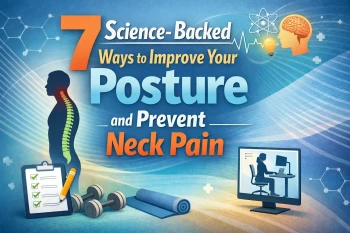
Nerve damage can be quite scary and sometimes nerve damage treatment options can be even scarier. However, this does not mean your nerve damage is permanent and luckily there is an all-natural nerve damage treatment option available that is safe for any age and allows the underlying cause of your nerve damage to be targeted without the undesirable side effects of medication or surgery.
What Causes Nerve Damage?
Nerve damage can be caused by compression, disease, or injury. Please let it be known there are various causes of nerve damage that are not limited to the following list of most common causes:
- Sprains, fractures, broken bones
- Repeated overextension
- Repeated movements due to job duties
- Auto accidents
- Contact sports injury
- Whiplash
- Poor posture
- Lack of exercise
While some causes of nerve damage can be due to lack of exercise because of nerve compression, it is not recommended to exercise the affected area until after treatment where there is a return of muscle strength and minimal pain. This is to ensure you do not injure the nerve further and allow it time to repair itself.
What are the Symptoms of Nerve Damage?
Nerve pain due to nerve damage can be felt in various amount of ways depending on the person’s severity. Below is a list of the most common symptoms of nerve damage:
- Stabbing pain
- Tingling, burning, or prickling sensation
- Numbness
- Problems with positional awareness
- Extreme sensitivity
- Muscle weakness
- Feeling as if you are wearing gloves or socks when you are not
When autonomic nerves are affected, your symptoms may also include:
- Troubles with bowel, bladder, or digesting
- Changes in blood pressure leading to lightheadedness or dizziness
- Heat intolerance
- Excessive sweating or not being able to sweat
Most Common Nerve Damage Treatments
Depending on the type of nerve damage, different treatment options are available. The most common options for nerve damage treatment are medication and surgery.
Medication is used to help relieve the pain you experience from nerve damage. The same medications used for depression, insomnia, and seizure may also be used to help relieve the nerve pain. Sometimes, to get pain relief, you may need corticosteroid injections.
In addition to the medications, physical therapy may be recommended depending on your case. Physical therapy is used to help prevent stiffness and restore function.
If the damage seems to not be healing properly, surgery is a very common next step as a nerve damage treatment. Sometimes the nerve can be sitting in a tight place or squeezed. The surgery looks to enlarge tight spaces or help free the affected nerve.
Other times, surgery will remove the damaged nerve and reconnect healthy nerve ends (known as nerve repair) or implant a piece of nerve that is from a different part of your body (nerve graft).
If there is a specific severe nerve injury present, surgery may be used to restore function to critical muscles; this is done by transferring tendons from one muscle to another one.
To aid in restoring functions to your affected muscles due to nerve damage, the following is used:
- Electrical Stimulation - Electrical stimulation in nerve damage treatments is not effective for everyone. These are used to activate muscles served by the damaged nerve while the nerve regrows.
- Braces or Splints - Braces or splints are used to keep the affected part of your body in the correct position to improve your muscle function.
- Exercise - Certain exercises are used to maintain your range of motion, improve the strength of your muscles, and reduce cramping.
- Physical Therapy - Specific movements or exercises are used in physical therapy to prevent stiffness and hope to restore your function and feeling by keeping your affected joints and muscles active.
Besides the above common list of nerve damage treatments, there is another nerve damage treatment option that could be very beneficial regardless if you have undergone surgery previously or not.
How Does an Upper Cervical Natural Treatment Work for Nerve Damage?
While surgery and medication work by altering the way your body responds to nerve damage, using upper cervical as a nerve damage treatment is all-natural and works by improving the way your body responds to an injury.
An upper cervical treatment for nerve damage comes into play when the professional sees an upper cervical misalignment. An upper cervical misalignment can be very damaging on the body by changing the way your body responds and gathers information that is transferred between your brain and body.
This misalignment, located in the neck area, can cause your vertebrae to compress your nerves – causing many symptoms associated with nerve damage including changes in your blood pressure, numbness, extreme sensitivity, pain, bowel, and bladder function, digestion, and prickling, tingling, and burning sensations.
In addition to this, the vertebrae can press against your brain stem, distorting your brain to body communication. This communication is extremely important to how your body responds to injury and foreign invaders. If these signals are distorted, it will be easier for the body to become sick and heal from injury.
What an upper cervical professional does is correct your upper cervical spine and remove any interference that is negatively affecting your body’s natural response and communicating functions.
As soon as misalignment is corrected, the compression is removed and your body begins to recover as much as it is able to naturally including improving the repair and healing process of your nerves.
Depending on the severity and how long your misalignment has been present, more adjustments may be needed. However, many patients have reported seeing relief from their nerve damage symptoms in as little as one adjustment.
If you or a loved one is looking for an effective nerve damage treatment that is natural and safe for any age, upper cervical can help by allowing your body the chance to do its best in repairing and healing your nerves naturally before a more extreme treatment is used.




Leave a comment